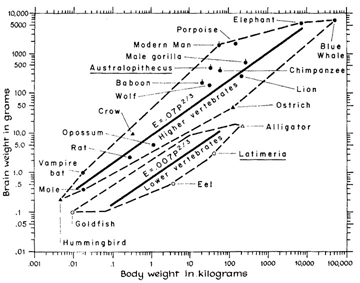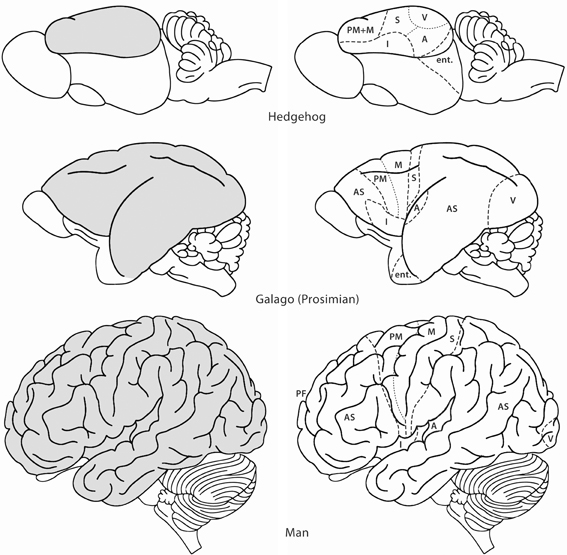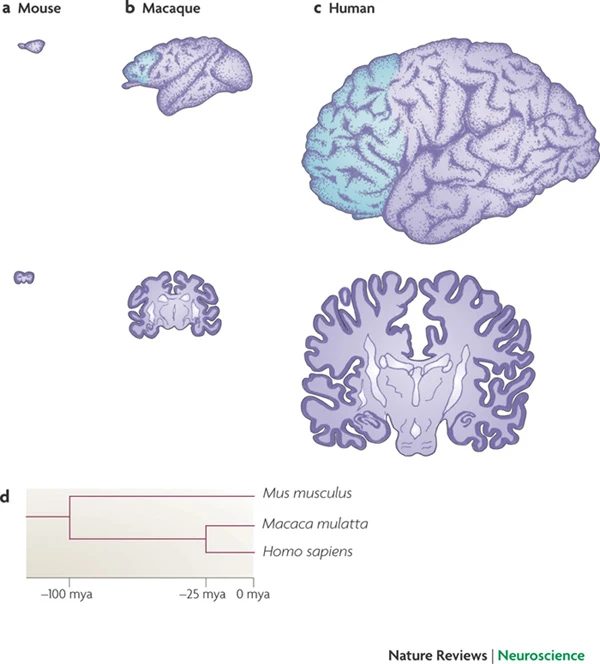Arendt, D., Tosches, M. A., & Marlow, H. (2016). From nerve net to nerve ring, nerve cord and brain — evolution of the nervous system.
Nature Reviews Neuroscience,
17(1), 61–72.
https://doi.org/10.1038/nrn.2015.15
Dobzhansky, T. (1973). Nothing in biology makes sense except in the light of evolution.
The American Biology Teacher,
35(3), pp. 125–129. Retrieved from
http://www.jstor.org/stable/4444260
Fox, D. (2016). What sparked the
Cambrian explosion?
Nature,
530(7590), 268–270.
https://doi.org/10.1038/530268a
Herculano-Houzel, S. (2016).
The Human Advantage: A New Understanding of How Our Brain Became Remarkable. MIT Press. Retrieved from
https://market.android.com/details?id=book-DMqpCwAAQBAJ
Hofman, M. A. (2014). Evolution of the human brain: When bigger is better.
Frontiers in Neuroanatomy,
8.
https://doi.org/10.3389/fnana.2014.00015
Northcutt, R. G. (2002). Understanding vertebrate brain evolution.
Integr. Comp. Biol.,
42(4), 743–756.
https://doi.org/10.1093/icb/42.4.743
Park, S. (2009).
Hydra movement. Youtube. Retrieved from
https://www.youtube.com/watch?v=-UI531GMRTM
Rakic, P. (2009). Evolution of the neocortex: A perspective from developmental biology.
Nature Reviews. Neuroscience,
10(10), 724–735.
https://doi.org/10.1038/nrn2719
Scale:, T. (2023).
To scale: TIME. Youtube. Retrieved from
https://www.youtube.com/watch?v=nOVvEbH2GC0
The Economist. (2015).
What caused the cambrian explosion? Youtube. Retrieved from
https://www.youtube.com/watch?v=qNtQwUO9ff8
twoodburn. (2008).
"Gentle Arms of Eden", by Dave Carter and Tracy Grammer. Youtube. Retrieved from
https://www.youtube.com/watch?v=bAGMATHlSK4&list=RDbAGMATHlSK4
Vanderhaeghen, P., & Polleux, F. (2023). Developmental mechanisms underlying the evolution of human cortical circuits.
Nature Reviews. Neuroscience.
https://doi.org/10.1038/s41583-023-00675-z
Wrangham, R. (2009).
Catching fire: How cooking made us human. Basic Books. Retrieved from
https://market.android.com/details?id=book-ebEOupKz-rMC













